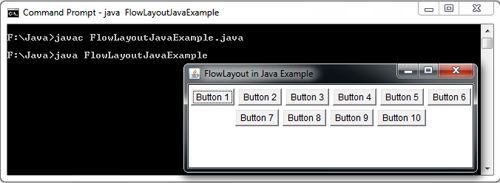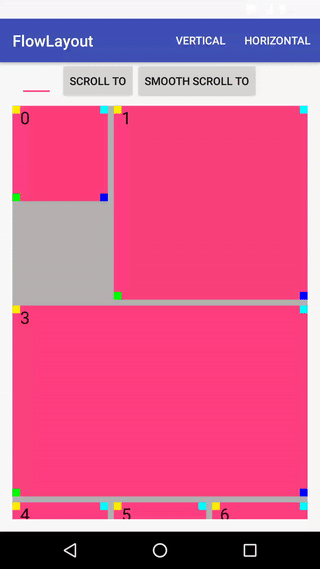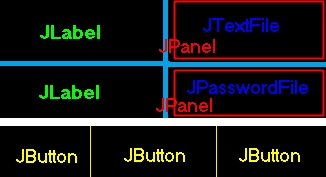

- Flowlayout with buttons like borderlayout how to#
- Flowlayout with buttons like borderlayout code#
- Flowlayout with buttons like borderlayout download#
It is a third-party layout manager, so you need to download the corresponding JARs. I have created your layout using MigLayout. These days we can choose only between GroupLayout, MigLayout, or FormLayout. GridBagLayout is outdated, poorly designed, overly complicated, and non-portable. Not useful at all for any practical layout. I recommend not to use GridLayout, because it is simplistic and really
Flowlayout with buttons like borderlayout how to#
More information are available in How to Use GridBagLayout section of Java Tutorial. You should note that the default layout manger for frames and applets is BorderLayout and the default for panels is FlowLayout. Making "=" button have quadruple width Resets to default width for the following buttons Let the buttons to occupy entire cells Creating a panel with Grid**Bag**Layoutįinal JPanel pane = new JPanel(new GridBagLayout()) įinal GridBagConstraints c = new GridBagConstraints() How can I most easily implement this to change the "C" button size? JPanel panel3 = new JPanel(new GridLayout(1, 3)) JPanel panel2b = new JPanel(new GridLayout(1, 2)) Ĭontent.add(panel2, BorderLayout.CENTER) JPanel panel2 = new JPanel(new GridLayout(4, 5)) Panel1.add(new JLabel("CSC 20 Lab 08", JLabel.CENTER), BorderLayout.NORTH) JPanel panel1 = new JPanel(new BorderLayout()) However, I am trying to get it to look like this:Ĭontainer content = frame.getContentPane()
Flowlayout with buttons like borderlayout code#
Therefore I am trying to find a work around instead since I could not figure out how to implement GridBagLayout into my code as it is.Ĭurrently the result of my code looks like this: I did not consider the fact that it would not make it possible to set different sized buttons.

The GridLayout manager is used to lay out the components in a rectangle grid, which has been divided into equal-sized rectangles and one component is placed in each rectangle. Define new buttons with different regions

BorderLayout(int hgap, int vgap): construct a border layout with specified gaps between components. I would like to add buttons in Border Layout one after another.BorderLayout(): construct a border layout with no gaps between components.When adding different components, you need to specify the orientation of it to be the one of the five regions.įor BorderLayout, it can be constructed like below:

For each region, it may contain no more than one component. Set the window to be visible as the default to be false frame.add(panel) Ī BorderLayout lays out a container, arranging its components to fit into five regions: NORTH, SOUTH, EAST, WEST and CENTER. tLayout(new FlowLayout()) //setting flowlayout panel.add(jb1) Define the panel to hold the buttons JPanel panel = new JPanel() JButton jb1 = new JButton("Button 1") JButton jb2 = new JButton("Button 2") JButton jb3 = new JButton("Button 3") Create and set up a frame window JFrame frame = new JFrame("Layout") 1) FlowLayout pretty accepting PreferredSize that came from JComponent, each of JComponents can have got different Dimension on the screen. If all components cannot be fit into one row, it will start a new row and fit the rest in. Normally all components are set to one row, according to the order of different components. The FlowLayout arranges the components in a directional flow, either from left to right or from right to left. In Java swing, Layout manager is used to position all its components, with setting properties, such as the size, the shape and the arrangement.įollowing are the different types of layout managers: Program to add two Numbers in Java Applet MDI using JDesktop Pane and JInternal Frame Serialization and Deserialization in Java Tokens, Expressions and Control Structuresįour Main Principles of Object Oriented ProgrammingĬlasses Associated with Java.util Package


 0 kommentar(er)
0 kommentar(er)
